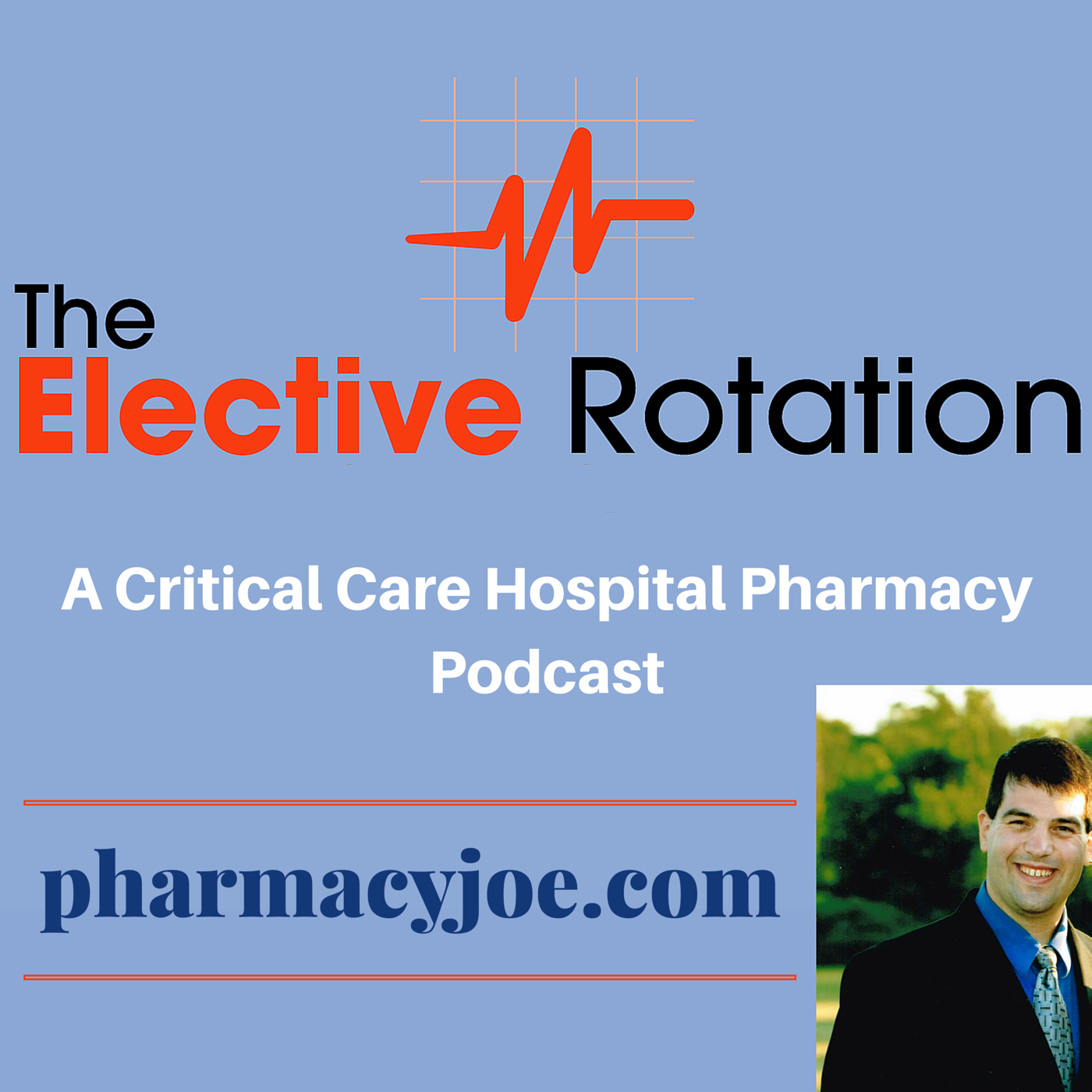In this episode, I’ll discuss the pharmacist’s role if malignant hyperthermia is suspected outside of the operating room. Subscribe on iTunes, Android, or Stitcher Malignant hyperthermia is a rare event, occurring in about 1 out of 100,000 administrations of anesthesia. While MH is usually thought of as occurring in the operating room, it can occur […]
A free twice-weekly podcast where you can listen to critical care and hospital pharmacy information
Subscribe to the #1 ranked critical care and hospital pharmacy podcast, The Elective Rotation here:
Episode 505: New observational data on hydroxychloroquine and Covid-19
In this episode, I’ll discuss a new observation study on hydroxychloroquine and Covid-19. Subscribe on iTunes, Android, or Stitcher Article Observational Study of Hydroxychloroquine in Hospitalized Patients with Covid-19 Lead author: Joshua Geleris Published in New England Journal of Medicine May 2020 Background Following reports from China and South Korea, and then a small French […]
Episode 504: Can the dose of enoxaparin for VTE prophylaxis be reduced in low weight patients?
In this episode, I’ll discuss whether the dose of enoxaparin for VTE prophylaxis can be reduced in low weight patients. Subscribe on iTunes, Android, or Stitcher Shout out to “Pharmacy Jeff” for inspiring this episode! When using enoxaparin for VTE prophylaxis in low-weight adults, doses can approach the 1 mg/kg normally associated with VTE treatment. […]
Episode 503: Safety of IV push antibiotics
In this episode, I’ll discuss an article about IVP antibiotic safety. Subscribe on iTunes, Android, or Stitcher Article Safety of intravenous push administration of beta-lactams within a healthcare system Lead author: Kassandra Marsh, PharmD, BCIDP Published in American Journal of Health-System Pharmacy April 2020 Background In the aftermath of hurricane disruptions to IV solution supply […]
Episode 502: Azithromycin vs. levofloxacin for legionella pneumonia
In this episode, I’ll discuss macrolides vs. fluroquinolones for legionella pneumonia. Subscribe on iTunes, Android, or Stitcher Traditionally it is thought that a bacteriocidal antibiotic is preferable to a bacteriostatic one, especially in severe infections such as legionella pneumonia. However, the IDSA guidelines recommend that either a fluoroquinolone or a macrolide may be used first-line […]
Episode 501: Highlights of the remdesivir emergency use prescribing information
In this episode, I’ll discuss the remdesivir emergency use prescribing information as it pertains to adult patients. Subscribe on iTunes, Android, or Stitcher Remdesivir is a viral RNA inhibitor which just received an emergency use authorization from the FDA for the treatment of COVID-19. For adult patients there are two different suggested dosage regimens: The […]
Episode 500: Is this Tamiflu 2.0?
In this episode, I’ll discuss the recent reports by the NIH and Gilead on the efficacy of remdesivir. Subscribe on iTunes, Android, or Stitcher Back in episode 486 when discussing medications with in vitro but otherwise unproven efficacy against COVID-19, I mentioned that efficacy data for remdesivir was expected in April 2020. The NIH met […]
Episode 499: What is the Clinical Effectiveness of PCC in Factor Xa Inhibitor-Related Intracranial Hemorrhage?
In this episode, I’ll discuss an article about using prothrombin complex concentrates for the treatment of factor Xa inhibitor-related intracranial hemorrhage. Subscribe on iTunes, Android, or Stitcher Article Factor Xa Inhibitor-Related Intracranial Hemorrhage (FiX-ICH): Results from a Multicenter, Observational Cohort Receiving Prothrombin Complex Concentrates Lead author: Nicholas G. Panos Published in Circulation April 2020 Background […]
Episode 498: NIH Guidelines on Therapeutic Options for COVID-19
In this episode, I’ll discuss the new NIH guidelines on therapeutic options for COVID-19. Subscribe on iTunes, Android, or Stitcher On April 21, the NIH published expert consensus guidelines on the treatment of COVID-19. As these guidelines are evidence-based, and we have not had enough time for the rigorous testing of therapies against COVID-19, there […]
Episode 497: Can the Tisdale Risk Score be used to identify ICU patients at risk of QTc prolongation?
In this episode, I’ll discuss whether the Tisdale Risk Score can be used to identify ICU patients at risk of QTc prolongation. Subscribe on iTunes, Android, or Stitcher The Tisdale Risk Score (TRS) was first published in 2013 as a way to identify hospitalized patients at risk for QT interval prolongation. The scoring system assigns […]
Episode 496: Can alteplase be used to treat COVID-19 patients with thrombotic disseminated intravascular coagulation?
In this episode, I’ll discuss whether alteplase can be used to treat COVID-19 patients with thrombotic disseminated intravascular coagulation. Subscribe on iTunes, Android, or Stitcher Many patients severely ill with COVID-19 develop a thrombotic disseminated intravascular coagulation. Fibrinolytic therapy has been studied in patients with acute lung injury previously, and several hospitals are currently enrolling […]
Episode 495: AHA and ACC Presidents offer advice on QTc interaction between hydroxychloroquine and azithromycin
In this episode, I’ll discuss advice given by AHA and ACC Presidents on QTc interaction between hydroxychloroquine and azithromycin. Subscribe on iTunes, Android, or Stitcher As discussed in episode 488, there is tremendous interest in combining hydroxychloroquine and azithromycin for the treatment of COVID-19 based on a small French observational study. Performing a risk:benefit analysis […]
- « Previous Page
- 1
- …
- 47
- 48
- 49
- 50
- 51
- …
- 90
- Next Page »
